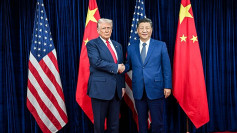Demand for soybeans in China declined to cause soybeans to close lower on Tuesday. China's customs administration said that the countries imports decreased by 40 percent year-over-year.
Aside from soybean import, other industries are also declining in China. The country had reported outbreaks of African swine fever which also said to contribute to the slow soybean import. The Chinese government also released data that showed that trade and factory activity is slowing in the country.
It leads others to think that China is facing more challenges in boosting its economy. The slowdown in China's academy creates doubt in the agriculture industry. Everyone is hopeful, however, due to the current trend of the trade relations between the United States and China. Delegates from the United States recently met with their counterparts in Beijing which lasted more than two days. Negotiators from China will visit Washington this month to continue the negotiation. Traders are optimistic that things will work out well as the two largest economies try to improve trade conditions
In the Chicago Board of Trade, soybean futures dropped 8 ¾ ¢ to $8.94 ¾ a bushel for March delivery. Soy meal also lost $2.10 to $309.70 per short ton. Similarly, soy oil dropped 0.13¢ to 28.27¢ a pound. Corn future also lost 6 ¾ to $3.71 ¾ per bushel. Prices of wheat also decreased by 2 3/4¢ to $5.11 ½ a bushel. Kansas City futures closed with a loss of 4 1/4¢ to $4.94 ¾ per bushel.
Chinese customs administration reported that the country's oilseeds import fell by 40 percent year-over-year last December. Reuters said that the demand for some necessities in the country is affected by the swine fever that spreads in the country.
Data from the U.S. Department of Agriculture showed that prices dropped because of daily or weekly export sales. The department failed to release information since the government shutdown started. The current U.S. government shutdown continues in its fourth week and is the longest shutdown ever recorded in U.S. history.
Without information from the government office, traders are hesitating in purchasing U.S. soybeans. They are worried that export sales are below their expectations when the data are released.
China reported on Monday that the trade surplus between the country and the United States increased to $323.3 billion in 2018. It increased by 17% year-over-year which is its highest record since 2006. China's exports to the United States increased by 11 percent year-on-year while the United States import to China increased by 0.7 percent.






